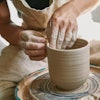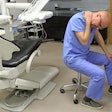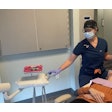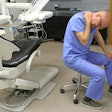In the U.S., suicide mortality was higher among dentists than the general population over the past 40 years, and it has climbed steadily for the last 25 years. The study was published in the Journal of the American Dental Association.
Improving access to mental health services and reducing stigma may reduce the risk of suicide among dentists, the authors wrote.
“Our study lays the foundation for future research aimed at better understanding how occupational stressors affect mental health, well-being, and suicidal ideation among dental care professionals,” wrote the authors, led by Dr. Suzanne Tomasi, MPH, an epidemiologist at the U.S. National Institute for Occupational Safety and Health at the U.S. Centers for Disease Control and Prevention in Morgantown, WV (JADA, October 10, 2025).
Dentists work in high-pressure environments, which are stressful due to myriad factors, including scheduling pressures, fear of malpractice, patient complaints, and the ongoing pressures of running a small business. These occupational stressors are known to put dentists at a greater risk of suicide.
In August 2025, a study published in the Journal of Psychiatric Research revealed that more than 3% of healthcare workers, including dentists, in the U.S. reported attempting suicide, and a combined 20% reported thinking about or planning to end their lives in the past year.
To explore suicide mortality among dentists in the U.S. and trends over time, data supplied by the ADA regarding U.S. dentists who died from 1979 to 2018 were matched to the National Death Index. Suicides were identified, and proportionate mortality ratios indirectly standardized for age, sex, race, and a five-year calendar period with 95% confidence intervals (CIs) were calculated using the U.S. National Institute for Occupational Safety and Health’s Life Table Analysis System. Suicide methods and trends were analyzed over time, according to the study.
During that period, there were 21,928 eligible decedent records. Of those, 475 (2.2%) of those deaths were suicides.
Compared to the U.S. general population, dentists had a higher proportionate mortality ratio (PMR, 2.02; 95% confidence interval [CI], 1.84 to 2.21; p < .001). For male dentists, the proportionate mortality ratio was 2.01 (95% CI, 1.83 to 2.21; p < 0.001). It was 2.15 (95% CI, 1.23 to 3.49; p = 0.009) for female dentists, the authors wrote.
Since 1995, proportionate mortality ratios for self-inflicted deaths increased steadily for men and women dentists. Over the last 25 years, the PMRs for all deceased dentists were more than 1.00 and statistically significant, indicating that clinicians consistently had higher PMRs from suicide than the general population in the U.S., they wrote.
However, the study had limitations, including that PMRs prevent them from being compared with other research or populations, the authors wrote.
“Dentist suicide prevention resources may be beneficial, particularly addressing occupational stressors,” Tomasi and colleagues wrote.




















